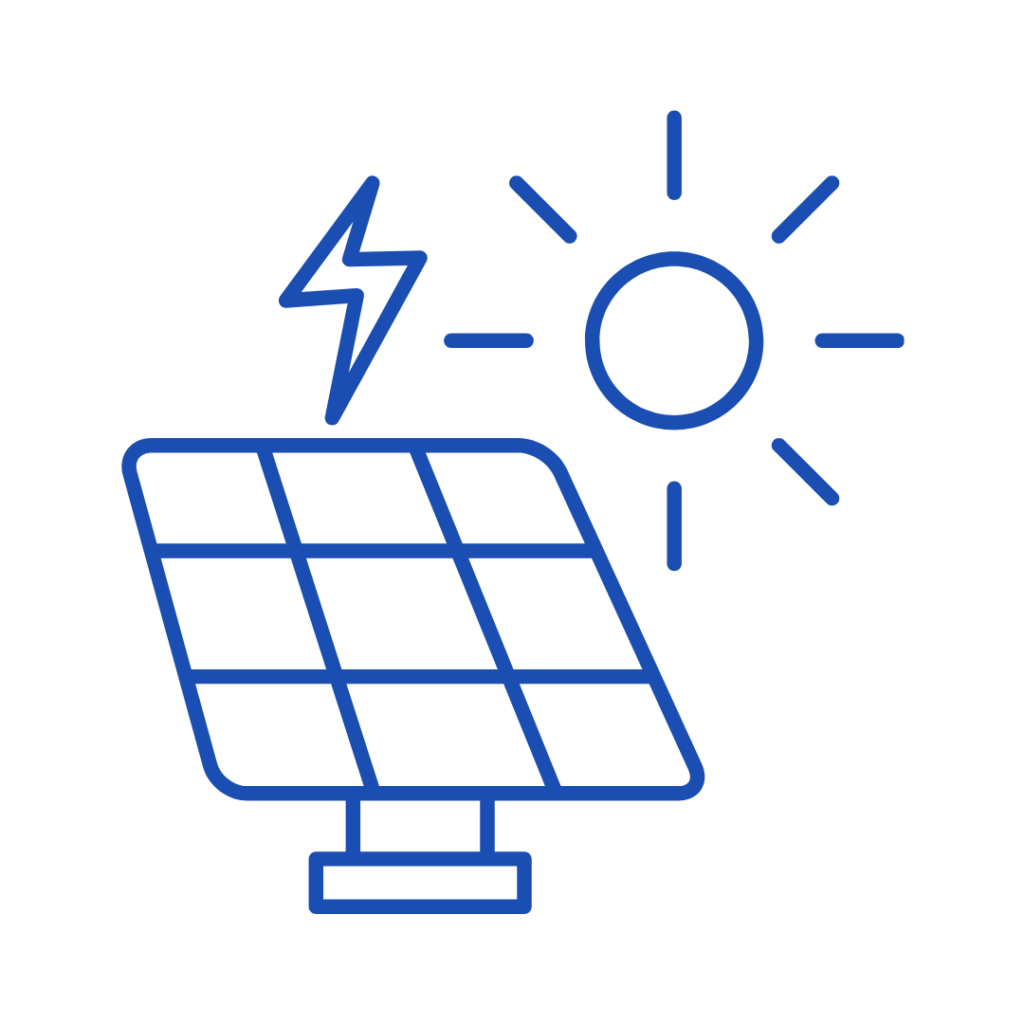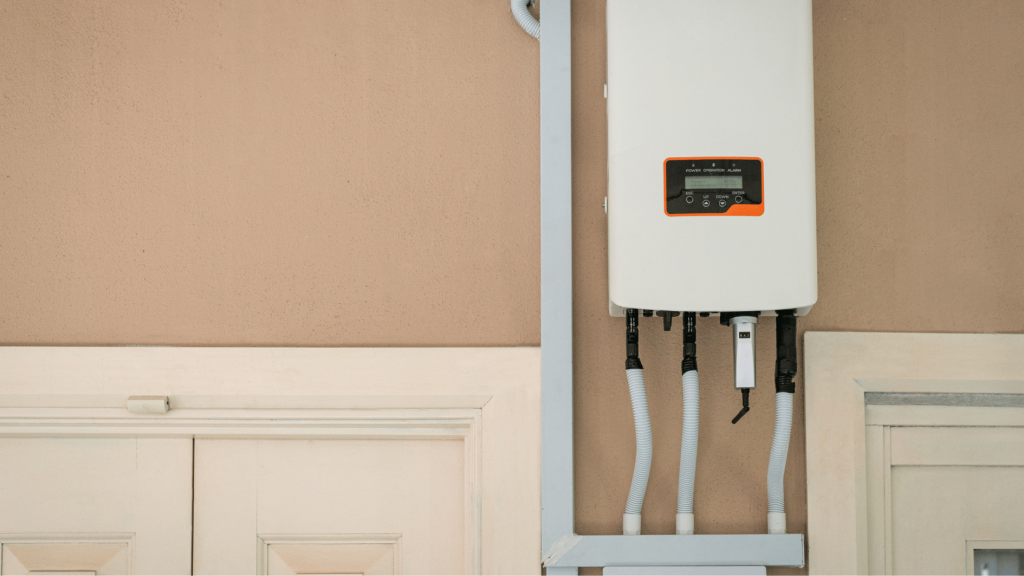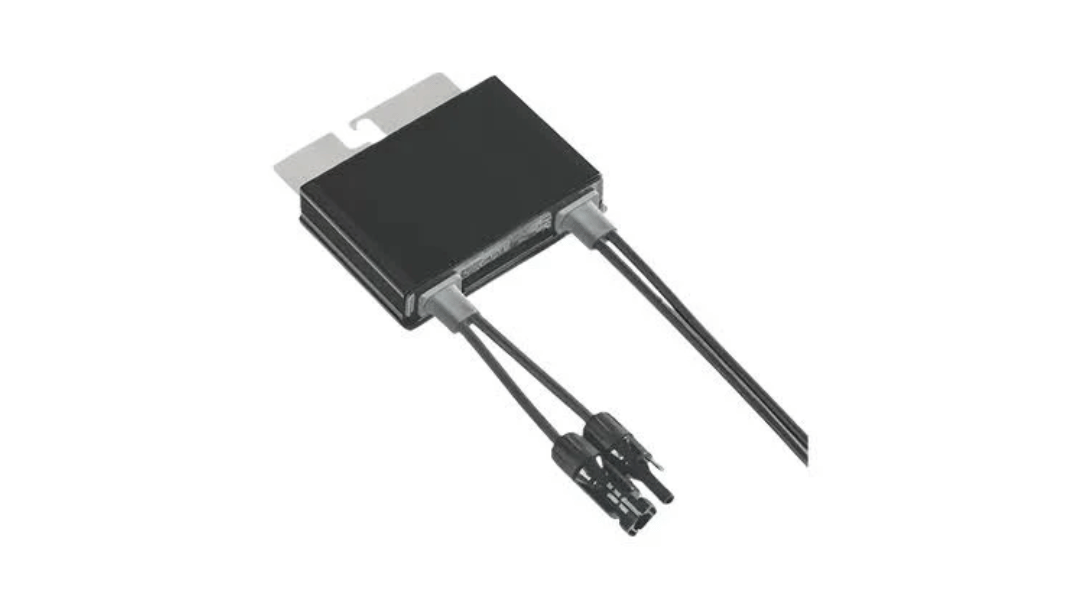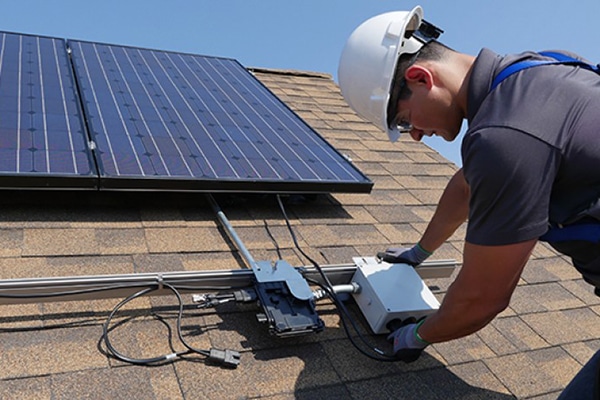Image source: Canva.com
If the sun isn’t shining on your solar panels, they won’t be able to produce energy. When trees or other obstructions shade solar panels, efficiency losses and reduced power generation can become problematic. In this article, we will examine the effects of shade on solar panel production and efficiency.
How Effective Are Solar Panels in the Shade?
Although the output will be reduced, solar panels still work in the shade, just at a lower capacity due to decreased sunlight exposure. The amount of energy they produce varies depending on the extent of the shade, but as a general rule, panels generate about half as much energy under shaded conditions compared to direct sunlight.
Sources of Shade on Solar Panels

Trees
Trees near your solar array can cause shading issues. Residential properties often have trees and foliage that can grow and obstruct sunlight.

Other panels
Solar panels can be shaded by nearby panels, especially in ground installations where the positioning can cast shadows.

Your roof
Panels can be shaded by parts of the roof, like chimneys or dormers, depending on the sun’s angle and time of day. Use tools like the SolarWiki Calculator to assess your property’s solar potential while accounting for local shading.

Clouds
Clouds technically block the sun and cast shade, but they still allow some sunlight through. Solar panels can still produce energy on cloudy days, albeit at lower efficiency. Germany, a world leader in solar production despite its cloudy weather, exemplifies this.
The Impact of Shade on Solar Panel Efficiency
Shaded solar panels produce less power than those in direct sunlight. The efficiency of a solar installation also depends on the design and type of inverters used.
Types of Inverters

String inverters
This is the most basic and widespread technology, where multiple panels are connected to a single inverter. The weakest panel determines the entire system’s efficiency. If one panel is shaded, the whole string operates at the efficiency of the shaded panel.

Power optimizers
These devices condition the DC electricity from each panel before sending it to a string inverter. They help mitigate the impact of shading on individual panels.

Microinverters
Installed for each individual panel, microinverters ensure that if one panel is shaded, the others continue to operate efficiently.
If your solar PV system will be partially shaded for a significant part of the day, consider using microinverters or power optimizers. While these options are slightly more expensive than standard string inverters, they can result in higher electricity production and greater long-term savings.
Discovering the Optimal Solar Configuration for Your Property
Shade can cause variations in solar generation, but these variations and dips in efficiency can be minimized through optimal panel layout and inverter selection. Solar installers can customize installations for your property, considering shading and other factors, to provide the best solar setup for your needs.






